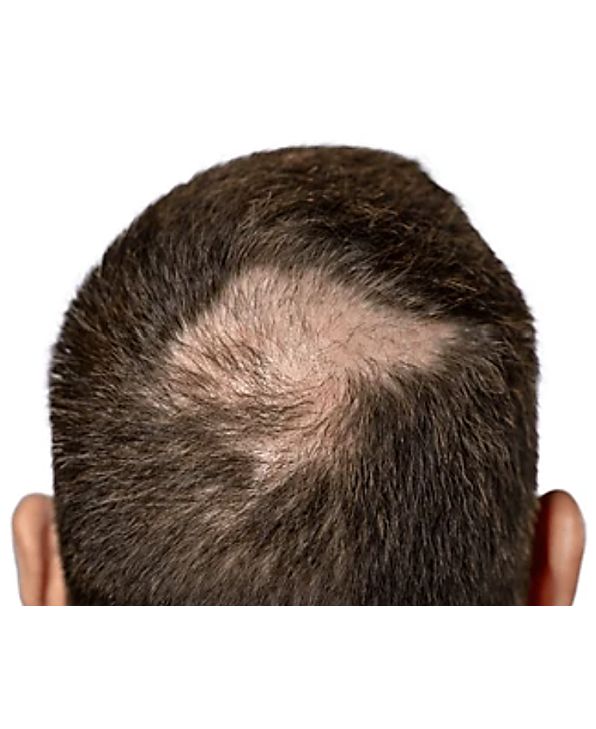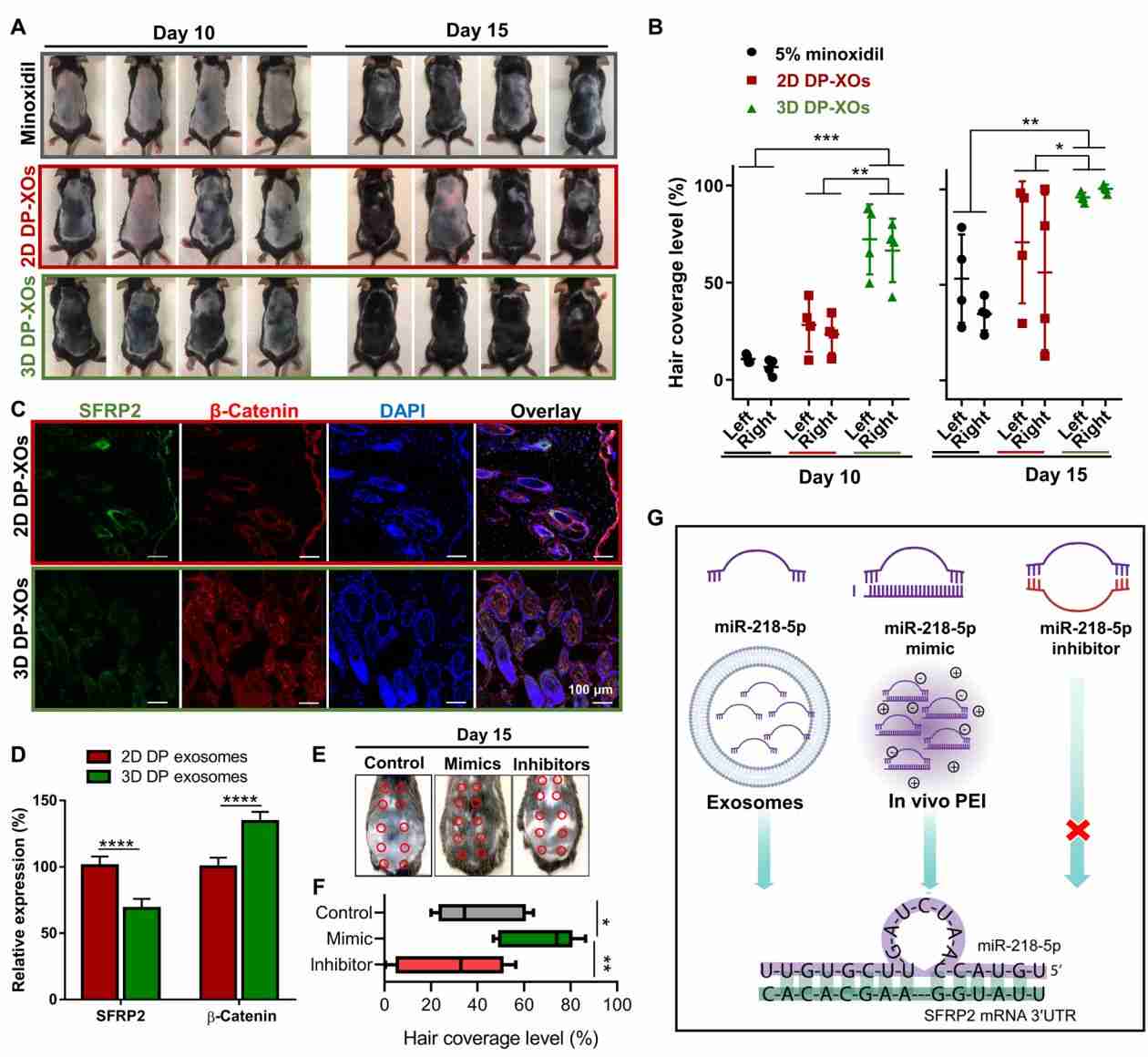Exosome Therapy in Hair Repair and Regeneration
With the accelerated pace of society and the increasing pressure on people, the incidence of alopecia areata in the population is on an increasing trend. Currently, there are many medications for alopecia areata, such as Finasteride and Minoxidil. Although these drugs have good therapeutic effects, their long-term use has strong side effects on the human body. Fortunately, the application of exosomes in hair regeneration has brought new solutions to these problems.
 Figure 1. Schematic of Milk-Exo mediated hair regrowth. (Kim H, et al., 2022)
Figure 1. Schematic of Milk-Exo mediated hair regrowth. (Kim H, et al., 2022)
What are Exosomes?
Exosomes are small extracellular vesicles with a diameter of about 30-150nm that are secreted by cells under specific stimulus conditions and are an important tool for intercellular communication. Exosomes are widely present and distributed in various body fluids, carrying and transmitting important signaling molecules, and can remotely target and regulate cell repair, growth, and differentiation. It is found that exosomes carry proteins, mRNAs, miRNAs, and lipids as important delivery signaling molecules to form a new cell-cell signaling system, which can be involved in the processes of cell communication, cell migration, vascularization, and cell growth.
Root Causes of Alopecia Areata

1. Problems such as inflammation of the hair follicle can interrupt intercellular communication, failing the follicular stem cell's self-regulatory function.
2. Damage to the hair follicle causes problems with the metabolism of the follicle stem cells, forcing a large number of hairs to go directly from the growth phase to the resting and regrowth phases, resulting in abnormal hair loss.
3. Along with aging and external environmental factors, the cells will also slowly age, resulting in hair loss, dryness, and lack of nutrients in the hair.
The Role of Exosomes in Hair Regrowth
Research has shown that exosomes play an important role in hair growth. Hair follicle stem cells are the key to hair regeneration, which can self-renew and differentiate into hair follicle cells. However, as we age, the number and function of follicular stem cells decline, leading to hair loss and thinning. Exosomes can promote hair growth and regeneration by interacting with follicular stem cells and promoting their proliferation and differentiation.
 Figure 2. Role of exosomes in regulating hair growth. (Cheng M, et al., 2024)
Figure 2. Role of exosomes in regulating hair growth. (Cheng M, et al., 2024)
Repair - Exosomes can repair damaged scalp cells and remodel the scalp's resistance barrier.
Activation - By activating hair follicle stem cells, exosomes promote the proliferation of hair papilla cells, inducing hair follicles to enter the anagen phase quickly.
Inhibit - Exosomes inhibit the production of the hair loss factor DHT.
Improvement - By improving blood circulation, exosomes can promote the absorption of nutrients.
Fixing - Exosomes can replenish scalp nutrients and maintain healthy hair growth.
Advantages of Exosomes for Hair Regrowth
- Solve the problem of hair loss from the root, including repairing and regenerating hair cells, promoting hair root cell division, and promoting hair growth.
- Non-surgical treatment, no trauma, and fast recovery.
- Reduce the side effects of drugs on the kidneys and liver.
- Longer maintenance effect.
Mechanism of Exosomes for Hair Regrowth
- Stimulation of Hair Follicle Cells
Exosomes contain growth factors, cytokines, and signaling molecules that stimulate the proliferation and differentiation of hair follicle cells (e.g., dermal papilla cells and follicular stem cells), which are essential for hair growth.
- Regulating the Hair Follicle Cycle
Exosomes can promote the transition of the hair growth cycle from the resting (quiescent) phase to the anagen (growth) phase, thereby prolonging the active growth period of the hair follicle.
- Inhibit Apoptosis
Exosomes have anti-apoptotic properties, which means they can prevent programmed cell death in hair follicle cells, helping to maintain the vitality and longevity of hair follicles.
- Promotes Angiogenesis
Exosomes stimulate the formation of new blood vessels around the hair follicle (angiogenesis), which improves the delivery of oxygen and nutrients to the hair root, thereby promoting hair growth.
- Anti-inflammatory and Antioxidant
Exosomes have been found to have anti-inflammatory and antioxidant properties that can help counteract the negative effects of inflammation and oxidative stress on hair follicles, creating a more favorable environment for hair growth.
Research Examples
- Dermal Papilla Cell (DPC) Exosomes
Given the critical role of DPC in the hair follicle (HF) growth cycle, research in recent years has focused on the role of DPC exosomes (DPC-Exos) in hair. It has been found that human DPC-Exos accelerates the onset of the anagen phase and delays the degenerative phase in mice (a model of the hair loss cycle). DPC-Exos also enhanced the proliferation of outer root sheath cells (ORSC) and DPC, increased levels of growth factors in DPC, and increased hair shaft (HS) elongation. In addition, it has been demonstrated that mouse DP sphere-derived exosomes containing miR-218-5p promote the development of HF by impairing the function of the Wnt/β-catenin signaling inhibitor SFRP2.
 Figure 3. Exosome therapy promotes hair regrowth on the back of mice. (Hu S, et al., 2020)
Figure 3. Exosome therapy promotes hair regrowth on the back of mice. (Hu S, et al., 2020)
- Mesenchymal Stem Cell Exosomes
Mesenchymal stem cell exosomes are another concern for hair loss prevention, especially adipose stem cell exosomes (ADSC-Exos). Human ADSC-Exos can enhance DPC migration and proliferation, increase the levels of β-catenin, BMP2, and cell cycle proteins in DPC, and attenuate the inhibitory effect of dihydrotestosterone (DHT) on DPC. In addition, by targeting SMAD3, ADSC-Exos containing miR-122-5p antagonized the inhibition of HF by DHT, increased the levels of β-catenin and versican in mice, restored the dermal thickness and HB size, and promoted the normal growth of HF.
 Figure 4. Schematic of hair growth induced by ADSC-Exos. (Li Y, et al., 2022)
Figure 4. Schematic of hair growth induced by ADSC-Exos. (Li Y, et al., 2022)
Today We Provide
As a leading provider of exosome solutions, Creative Biostructure helps clients explore the power of these extraordinary extracellular vesicles to promote hair regrowth and revitalization. With an in-depth understanding of exosome biology and the multifaceted mechanisms of action, we offer a comprehensive suite of exosome products and specialized services that have paved the way for breakthroughs in hair restoration.
With deep expertise in exosome isolation, characterization, engineering, and analysis, we offer tailored solutions to help clients understand the hair growth-promoting properties of exosomes. If you are interested in our exosome services and products, please feel free to contact us for more information.
| Cat No. | Product Name | Source |
| Exo-SC02-1 | HQExo™ Exosome-PCS-500-012 | Exosome derived from human bone marrow-derived mesenchymal stem cell line (PCS-500-012) |
| Exo-SC02-2 | HQExo™ Exosome-Pla-MSC | Exosome derived from human placental derived mesenchymal stem cell |
| Exo-SC01 | HQExo™ Exosome-PCS-500-011 | Exosome derived from human pre-adipose derived mesenchymal stem cell (PCS-500-011) |
| Exo-SC03 | HQExo™ Exosome-hTERT | Exosome derived from hTERT-immortalized Mesenchymal Stem Cell |
| Exo-SC04 | HQExo™ Exosome-MSC | Exosome derived from Xeno-Free Human Mesenchymal Stem/Stromal Cells and Media |
| Exo-C01 | CosExo™ Exosome-Milk | Exosome derived from milk |
| Exo-C02 | CosExo™ Exosome-hMSC | Exosome derived from Human Umbilical Cord Mesenchymal Stem Cell |
| Explore All Exosome Products | ||
References
- Kim H, et al. Potential of Colostrum-Derived Exosomes for Promoting Hair Regeneration Through the Transition From Telogen to Anagen Phase. Front Cell Dev Biol. 2022. 10: 815205.
- Cheng M, et al. The Roles of Exosomes in Regulating Hair Follicle Growth. Clin Cosmet Investig Dermatol. 2024. 17: 1603-1612.
- Hu S, et al. Dermal exosomes containing miR-218-5p promote hair regeneration by regulating β-catenin signaling. Sci Adv. 2020. 6(30): eaba1685.
- Li Y, et al. Exosomes Secreted from Adipose-Derived Stem Cells Are a Potential Treatment Agent for Immune-Mediated Alopecia. J Immunol Res. 2022. 2022: 7471246.